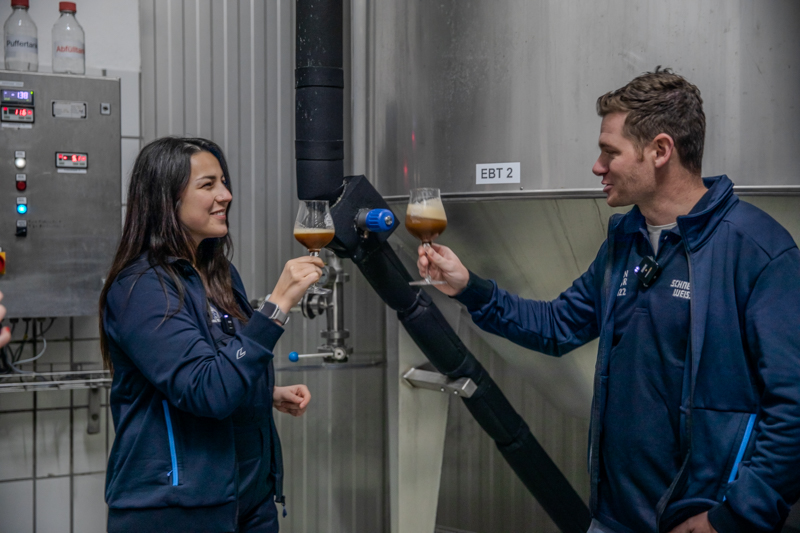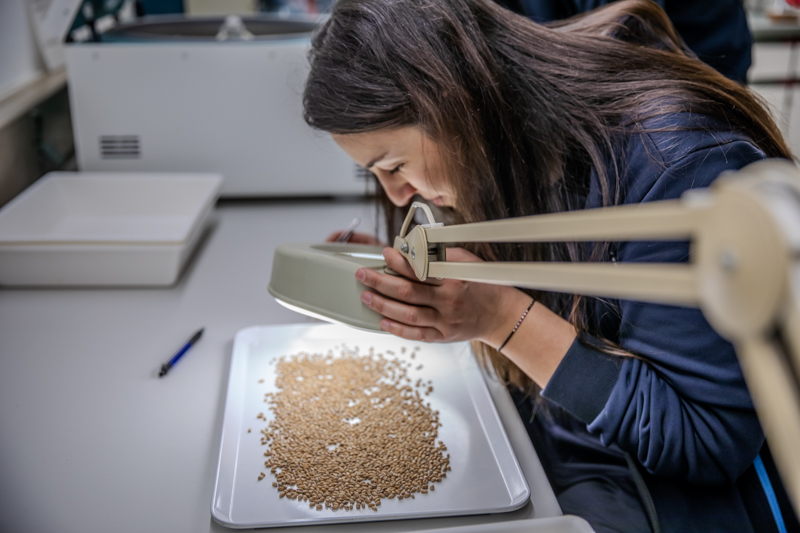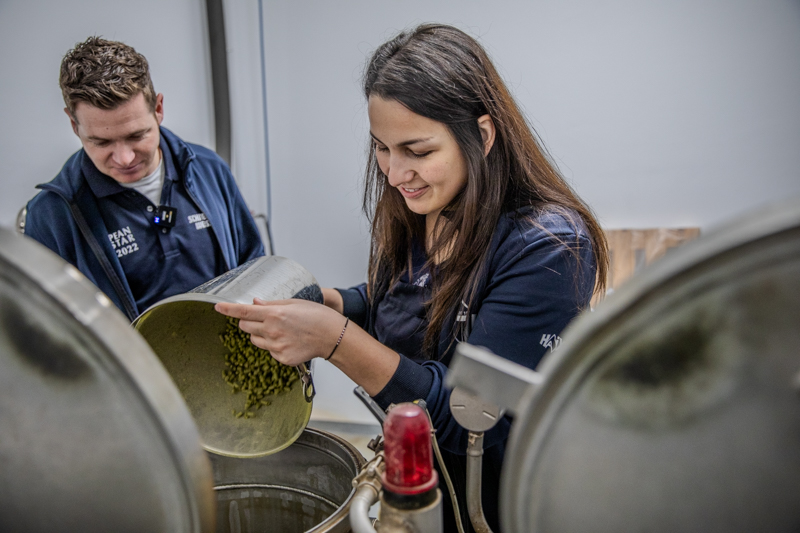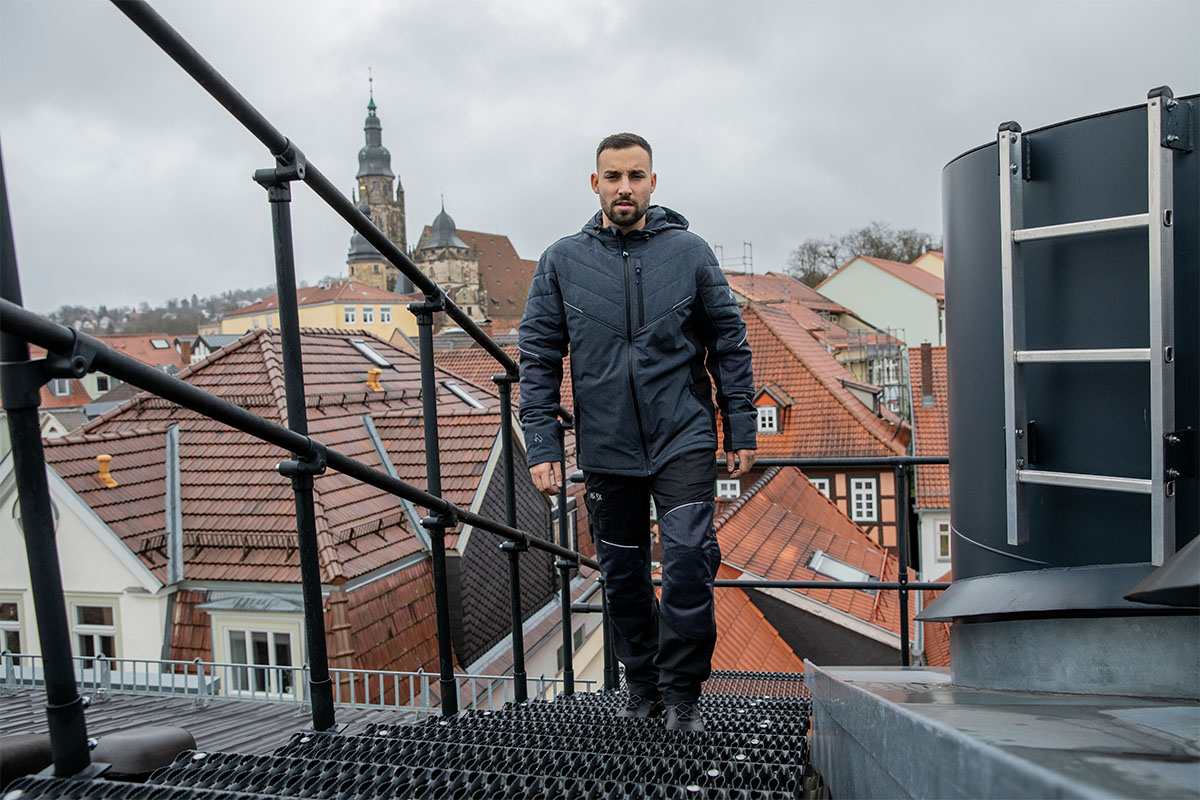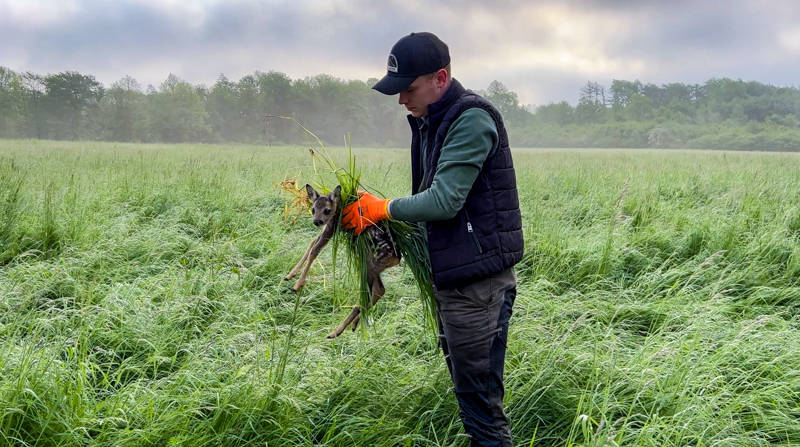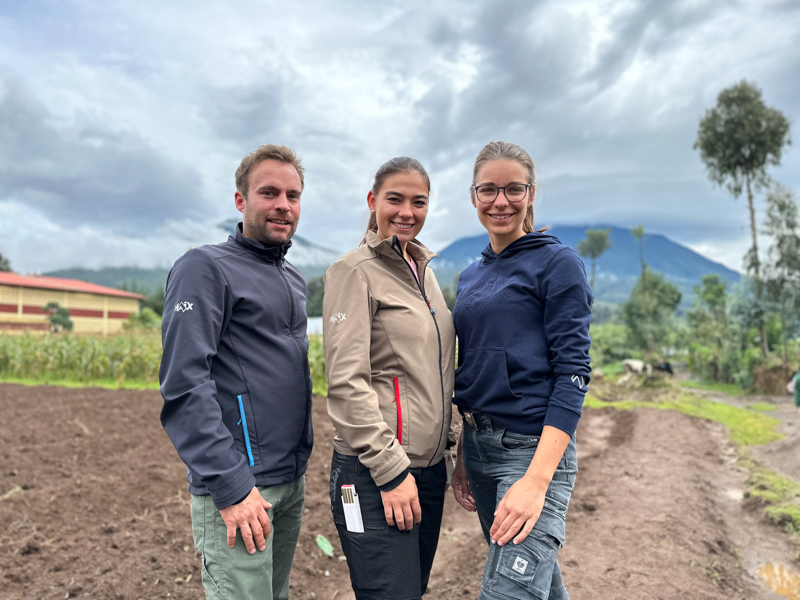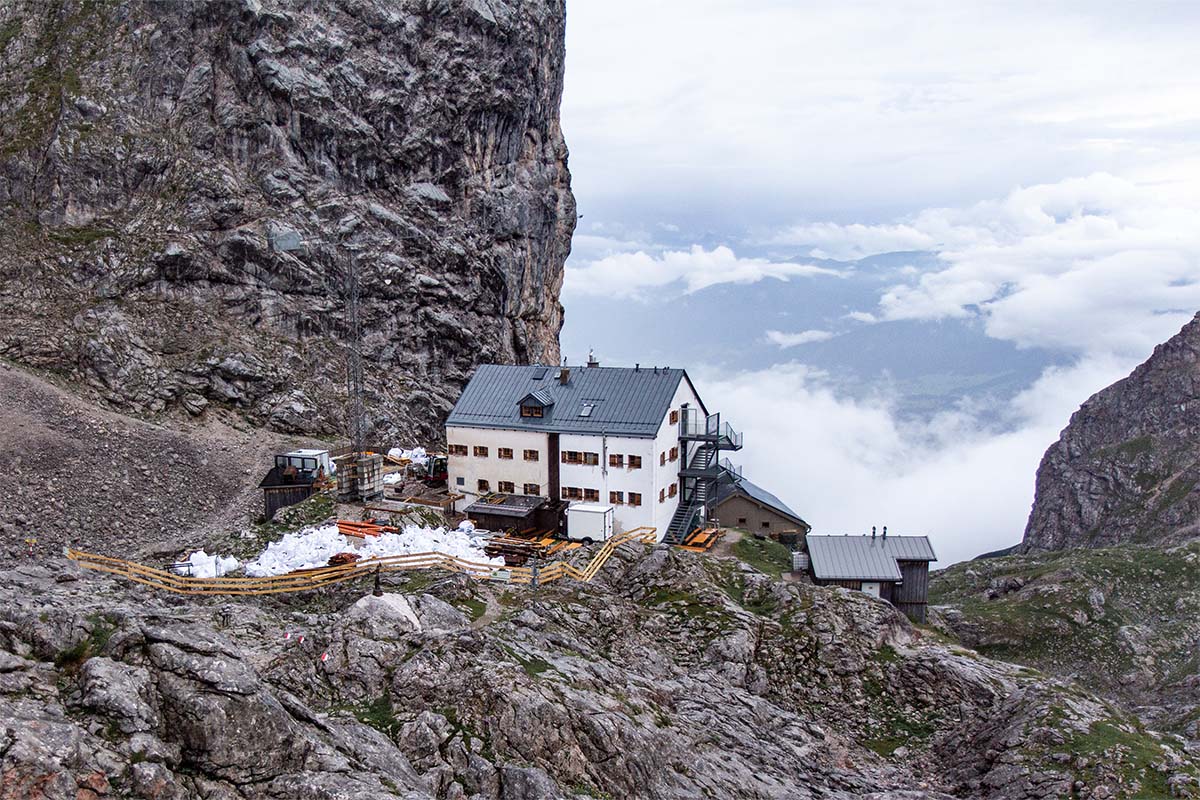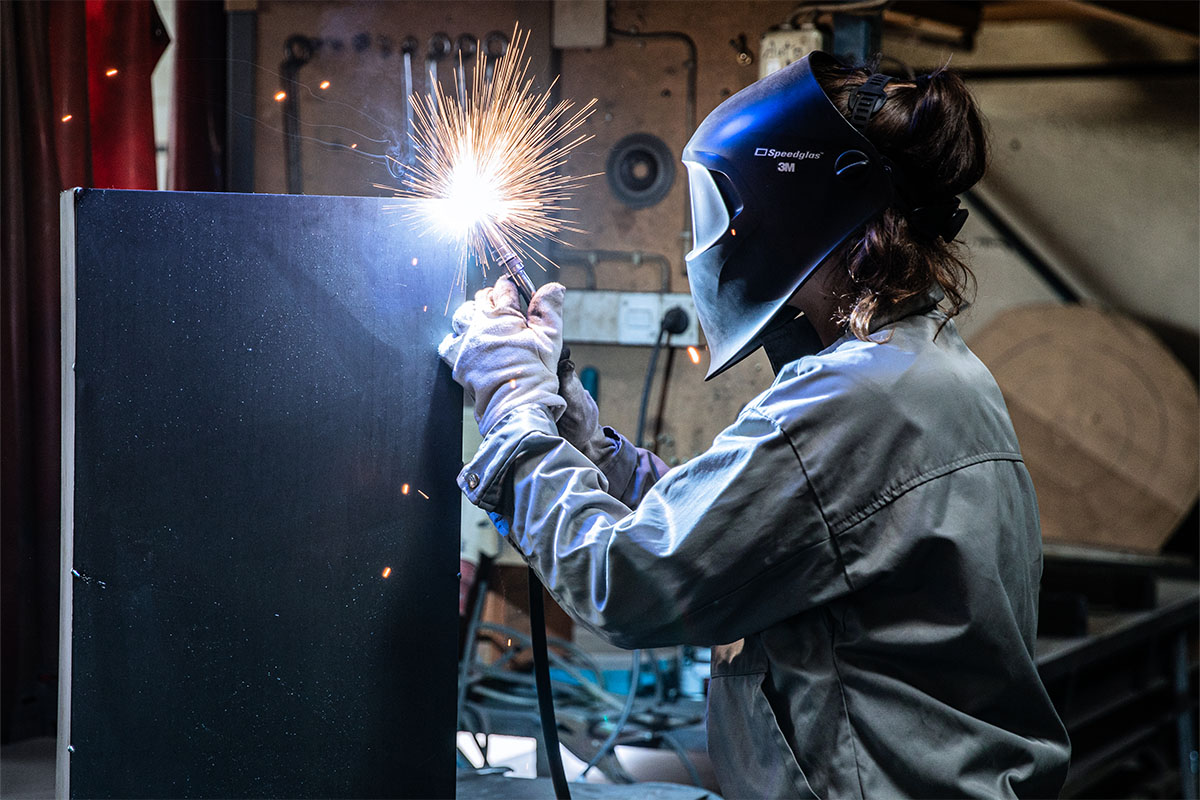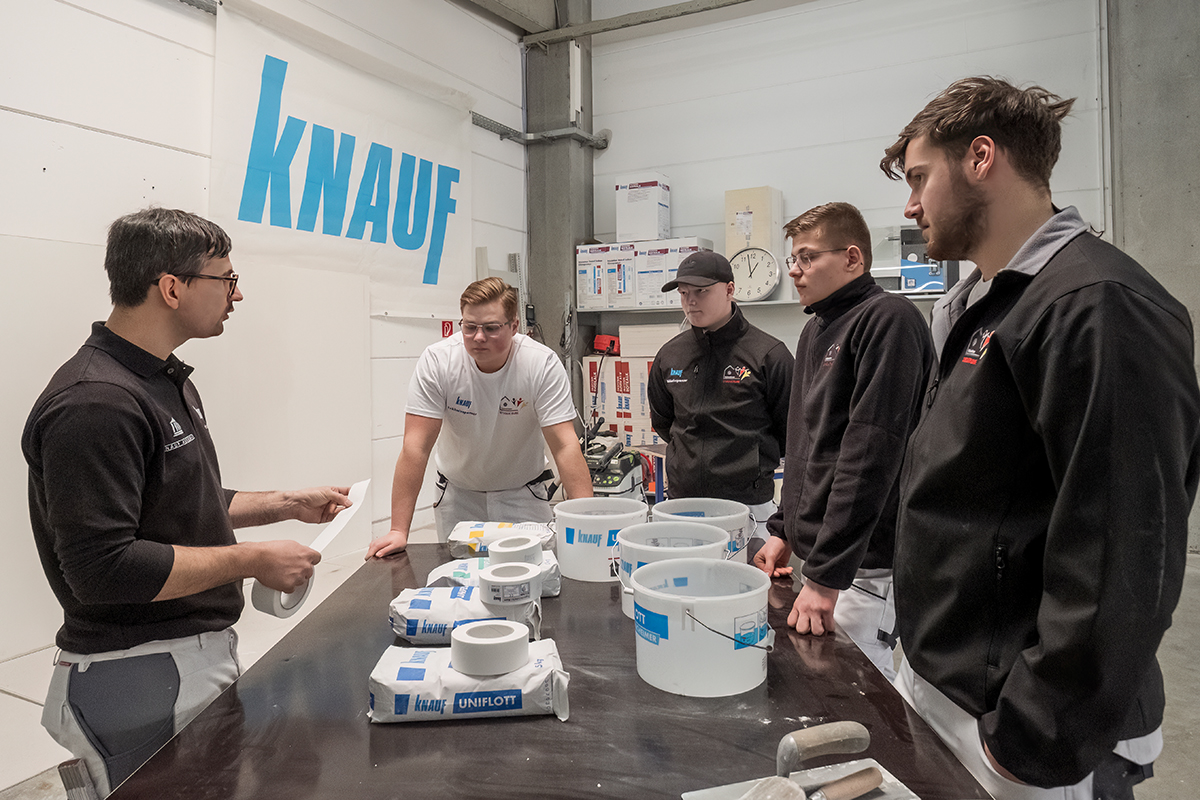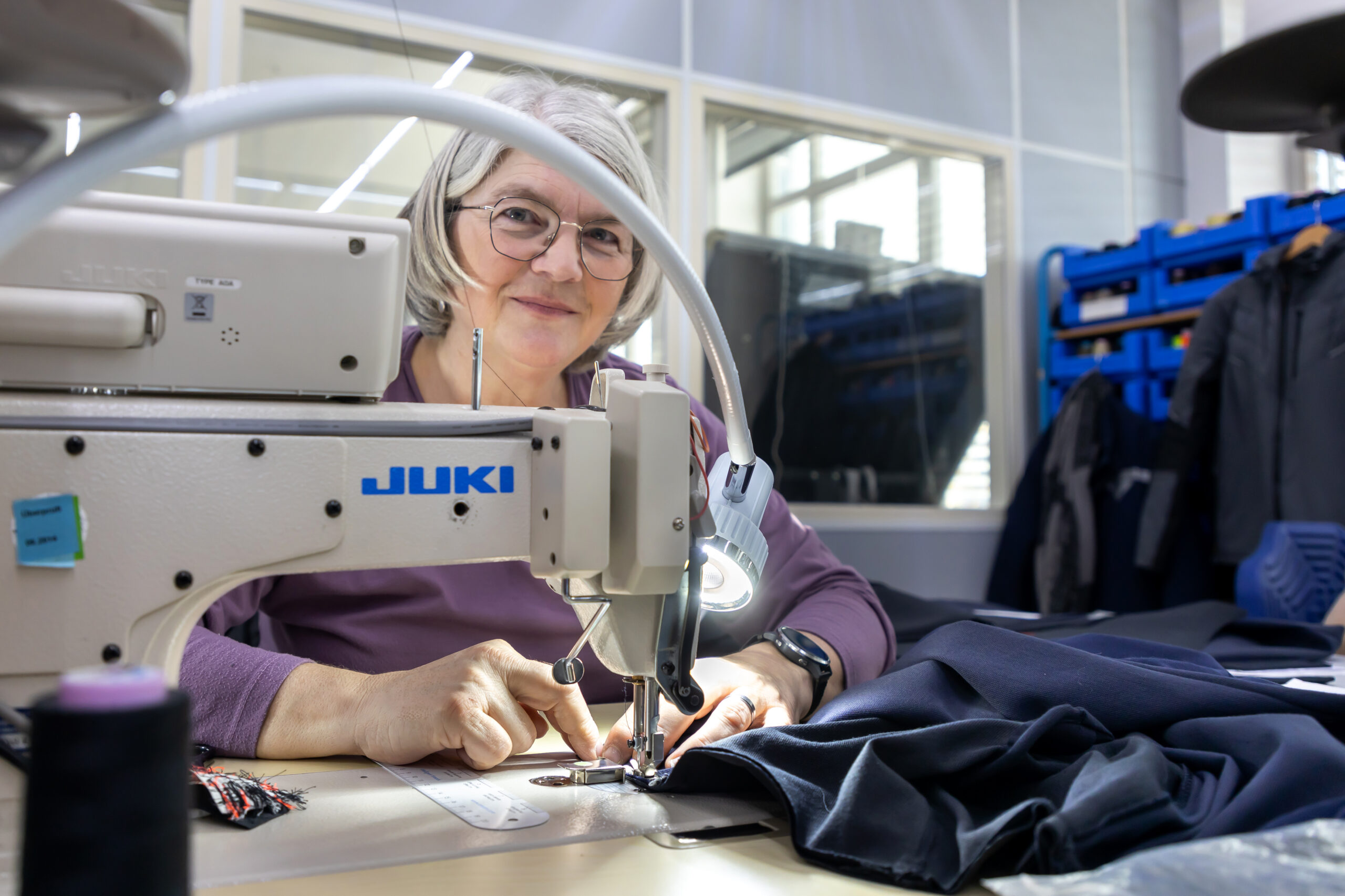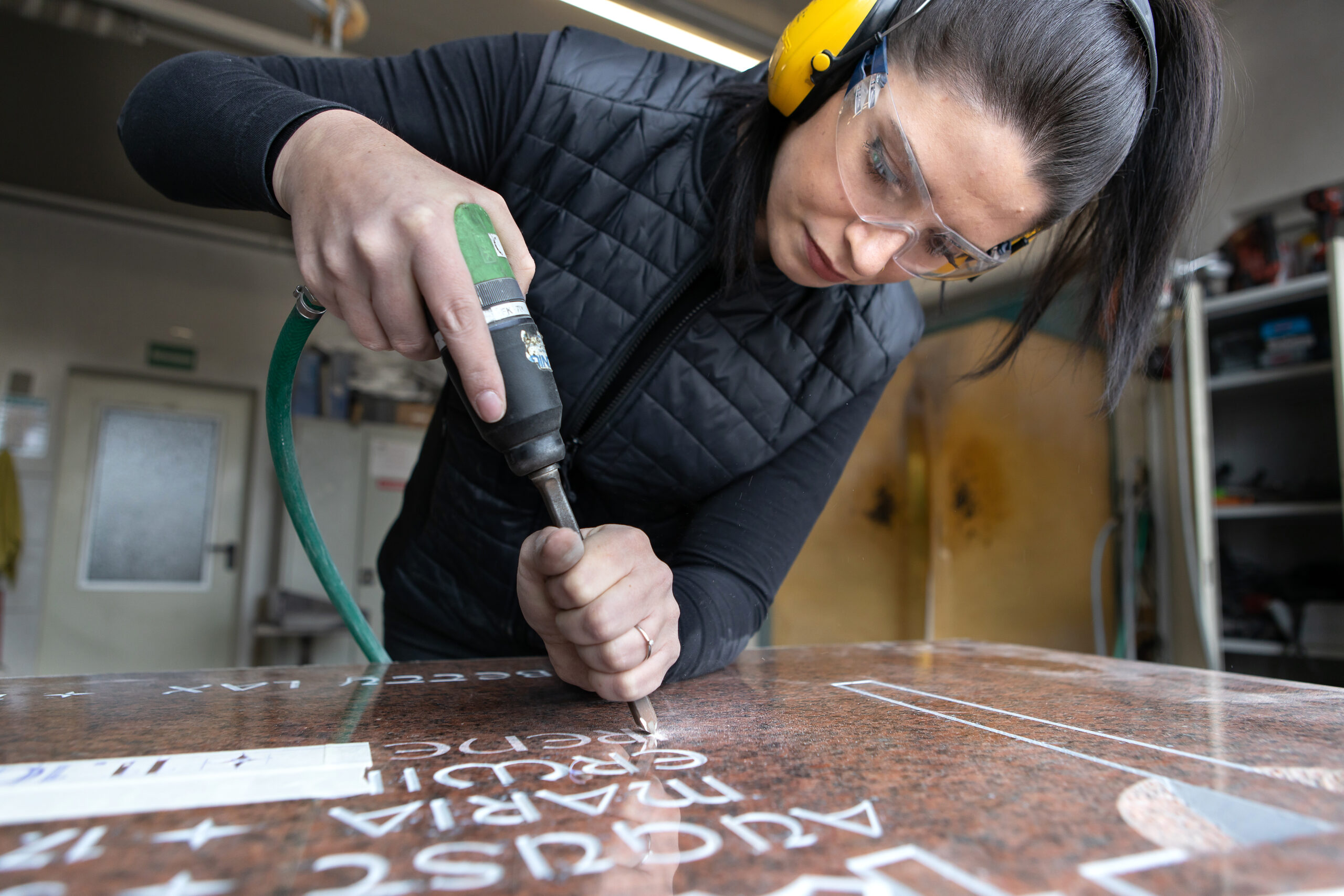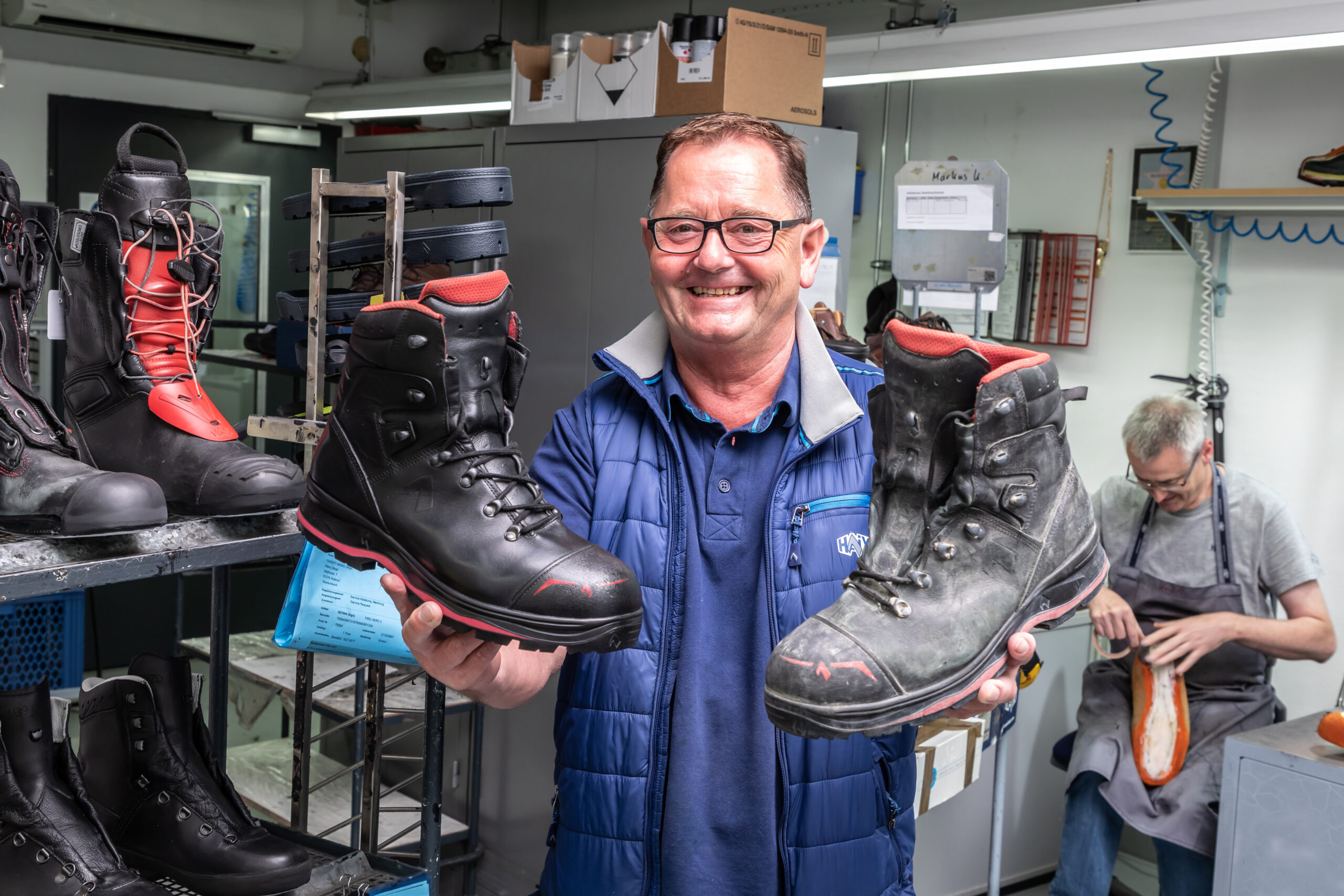One day internship at Schneider Weisse
I like to drink beer, so how cool would it be if I could brew it myself? I asked Bavaria’s oldest wheat beer brewery if I could swing by and see whether I could separate the wheat from the chaff. I found out whether I was cut out for brewery life during my visit to Schneider Weisse in Kelheim.

Starting off strong with an Eisbock on tap
According to German purity regulations, all you need is water, hops, and malt to brew beer. “Surely it can’t be that hard, then?” I find myself thinking. I’m fond of beer, and as a teen, brewer was actually on my list of dream jobs. So today, I’m feeling excited and eager to learn, and I’m looking forward to spending the day with master brewer Josef. He’s been working at Schneider Weisse for two and a half years and oversees production from start to finish. Our first stop was the fermentation tanks—giant silver cylinders made of steel that are stationed around the room. A small tube about the size of a drinking straw protrudes from the tank at eye level. Zwickeln (tap sampling) is all about—you guessed it—sampling the product. Josef opens the valve and a jet of caramel-colored liquid shoots into the bulbous glasses.
And so I start the day with an Eisbock—an almost-ready beer. The name comes from Doppelbock, a type of beer from which water is extracted by freezing, thereby making the remaining ingredients more highly concentrated, which gives the beer a more intense flavor. Early brewers most likely discovered this process purely by chance when they accidentally left their beer kegs outside one winter. We give it a sniff and then take a sip. “Tastes like Christmas,” declares Josef, and I agree with him. My breakfast doesn’t usually have an alcohol content of 12 percent, but this morning’s was a little different. A strong start to an eventful day.
Wort’s going on?
Schneider Weisse is Bavaria’s oldest wheat beer brewery. Some parts of the ever-growing building complex are over 400 years old. My poor sense of direction was no match for all the doors and stairways, so I just followed Josef around until we found ourselves back among the silver tanks in the brewhouse. Something that looks like washbasin with a round peephole stands at the center of the room, with a reddish liquid—the wort—flowing through it. Using a so-called “beer spindle”—a glass measuring instrument that we cautiously dipped into an extract of cooled wort—we were able to determine the original wort. The beer spindle goes up a little bit, then levels off before settling on a value of 18 degrees Plato. This is important for the subsequent taxation of the beer, I learn.
Thoroughly inspecting the hops and malt
We take a very close look at the malt intake. To ensure that quality remains at the highest level, I am allowed to carry out a visual inspection in the lab. I grab the tweezers and examine the grains through a magnifying glass. I meticulously pick out the bad ones. In this case, “bad” can mean a barley grain instead of a wheat grain, or a wheat grain with visual defects. I have to admit that I found mindfully selecting the grain really relaxing. Now’s the perfect time to take a peek inside a particularly fragrant storehouse.
Hallertau hops give the beer its signature aromatic flavor. But we can’t simply open the vat in the brewhouse to add the hops. “If 30,000 liters boiling at one hundred degrees shoot out, we’ll all have a problem,” explains Josef. For that reason, we feed the hop pellets into the wort via pressurized tanks. Timing dictates whether the beer needs more bitters or more flavor. We select the middle tank, unscrew the top, tip the pellets in, and screw it shut again. The pipes do the rest of the work.
Brewery for beginners
Mashing, clarification, tapping—brewers have their own language. Brewing is an ancient craft, so even though the technical processes have been modernized, the traditional terms have remained. “It’s called tapping because brewers used to have to cut a small hole out of the wooden casks to be able to sample the beer,” Josef explains. As well as the original terminology, Schneider Weisse also places great value on craftsmanship. One such example is how brewers skim off the excess yeast by hand during open fermentation.
We head to the fermentation cellar so I can see how it’s done. This is where 300,000 liters beers ferment in large vats. “The vats are open, so the yeast gets less oxygen, which puts it under more stress and ensures a better flavor,” explains Josef. “So stress leads to better results? That’s definitely not the case for me,” I think to myself. And this becomes all the more apparent when Josef tries to familiarize me with some of the chemical processes involved in brewing beer. It’s all about enzymes and microorganisms that do various things to varying degrees—cue the question marks in my head multiplying like alcohol during fermentation. It all comes down to three simple ingredients and one complex process—brewing beer requires a great deal of expertise and craftsmanship. My crash course is coming to an end, as is my attention span.

New job on the horizon?
If there’s one thing I realized after my day at the brewery, it’s that it’s never too late to follow your dreams, as long as you’re passionate enough. Josef is the perfect example: He got a Business Studies degree and then worked in the paper industry before finally starting his brewing apprenticeship at the age of 28. Today, he is the master brewer in charge of production at Bavaria’s oldest wheat beer brewery. “My dream was always to be really good at something professionally, to master a trade. It makes me proud to be able to help preserve the ancient art of brewing beer so that it can one day be passed on to the next generation. I love good food and good beer and that’s why I enjoy going to work every day,” Josef beams.
What about me? It’s been a barrel of laughs, but I think I’ll leave brewing to the experts. Fortunately, I can experience the sacred craft of brewing beer in a different, more appreciative way—by sitting back, relaxing and enjoying the end product.
